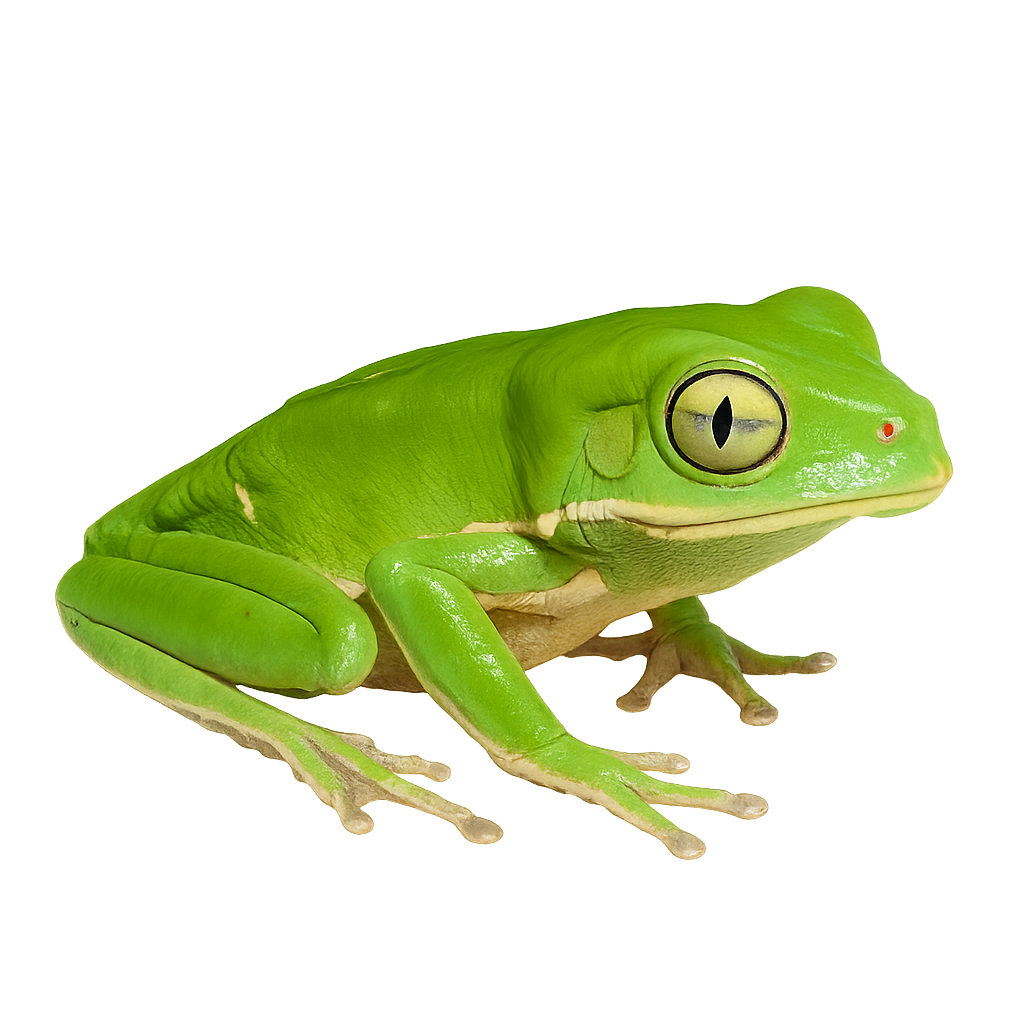Your wildlife photography guide.
Explore the painted-belly leaf frog in detail, study its behavior, prepare your shots.
Where to observe and photograph the painted-belly leaf frog in the wild
Learn where and when to spot the painted-belly leaf frog in the wild, how to identify the species based on distinctive features, and what natural environments it inhabits. The WildlifePhotographer app offers tailored photography tips that reflect the painted-belly leaf frog’s behavior, helping you capture better wildlife images. Explore the full species profile for key information including description, habitat, active periods, and approach techniques.
Painted-belly Leaf Frog
Scientific name: Phyllomedusa sauvagii

IUCN Status: Least concern
Family: HYLIDAE
Group: Amphibians
Sensitivity to human approach: Suspicious
Minimum approach distance: 3 m
Reproduction period: November to February
Incubation: 8–12 jours
Births: December to March
Habitat:
Dry forests, savannas, shrublands
Activity period :
Mainly active at night, generally discreet during the day.
Identification and description:
The Painted-belly Leaf Frog, scientifically known as Phyllomedusa sauvagii, is a remarkable arboreal amphibian native to the dry Gran Chaco region of Argentina, Paraguay, and Bolivia. It is characterized by its thick, waxy skin that helps minimize water loss, an essential adaptation for survival in its arid habitat. Its bright green coloration provides excellent camouflage among leaves, while its golden eyes and adhesive fingers allow it to move effortlessly through trees. This frog is primarily nocturnal, resting during the day to avoid intense heat. It feeds mainly on insects and other small invertebrates. Although its conservation status is currently "least concern," habitat destruction poses a potential threat.
Recommended lens:
Macro – adjust based on distance, desired framing (portrait or habitat), and approach conditions.
Photography tips:
To photograph the Painted-belly Leaf Frog, it is advisable to use a macro lens to capture the fascinating details of its waxy skin and golden eyes. Look for it at dusk or night when this frog is most active. Be patient and quiet to avoid startling it, and use soft lighting to avoid disturbing its natural behavior. Photographing in natural settings, such as dry forests or savannas, provides an ideal backdrop to highlight its natural camouflage.
From knowledge to field practice
A species profile helps you understand an animal. In the field, the challenge is often different. Remembering your own observations.
The WildlifePhotographer app allows you to:
• record your personal observations
• note locations, dates, and behaviors
• revisit your field references over time
• build a private and long-term field logbook
The app does not provide observation locations.
It helps you organize what you actually observe, with respect for wildlife.

